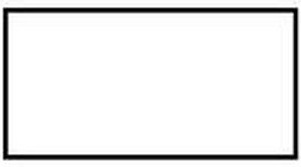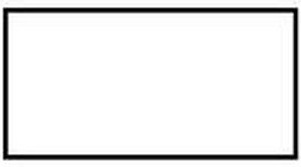Información para autores/as
¿Desea realizar un envío a la revista? Le recomendamos que revise las políticas específicas para cada sección de la revista en Acerca de la revista, así como en las Pautas para el autor/a. Los autores/oras deben registrarse en la revista DANDO CLICK EN LA OPCIÓN AUTOR AL FINAL DEL FORMULARIO antes de enviar un texto o, si ya están registrados, pueden simplemente conectarse y empezar el proceso de envío en cinco pasos. Adicionalmente, una copia del artículo y de los datos del autor deben ser enviadas al correo map@eafit.edu.co
Mundo Asia Pacífico
Guía Elaboración de Artículos
La Revista Digital Mundo Asia Pacifico (MAP) es una publicación semestral y multidisciplinaria que busca articular el conocimiento sobre la región Asia Pacífico y su relación con América Latina desde diferentes áreas, fomentando la participación de toda la comunidad académica del país y a nivel internacional.
La revista abarca temas diversos y complejos en la región que permiten evidenciar su dinamismo e importancia creciente:
- Economía y finanzas.
- Negocios y relaciones internacionales.
- Educación, innovación y tecnología.
- Cultura, sociedad y medio ambiente.
*Los autores pueden realizar propuestas sobre otros temas relacionados con la región.
Los países que comprenden la región Asia Pacífico para efectos de esta revista son: China, Japón, Corea, Nueva Zelanda, Australia, India, Singapur, Tailandia, Indonesia, Filipinas, Brunei, Malasia, Vietnam, Cambo ya, Laos y Myanmar.
Todos los artículos presentados deben ser recientes. No se tendrán en cuenta artículos que hayan sido publicados en otras revistas con el objetivo de garantizar las normas de derecho de autor. El Centro de Estudios Asia Pacifico se reserva el derecho de seleccionar los artículos para su publicación.
Tipos de artículos
La Revista Digital Mundo Asia Pacífico admite artículos inéditos que correspondan a la siguiente clasificación:
- Artículo de investigación científica y tecnológica: documento que presenta, de manera detallada, los resultados originales de proyectos terminados de investigación. La estructura generalmente utilizada contiene cuatro apartes importantes: introducción, metodología, resultados y conclusiones.
- Artículo de reflexión derivado de investigación: documento que presenta resultados de investigación terminada desde una perspectiva analítica, interpretativa o crítica del autor, sobre un tema específico, recurriendo a fuentes originales.
- Artículo de revisión: documento resultado de una investigación terminada donde se analizan, sistematizan e integran los resultados de investigaciones publicadas o no publicadas, sobre un campo en ciencia o tecnología, con el fin de dar cuenta de los avances y las tendencias de desarrollo. Se caracteriza por presentar una cuidadosa revisión bibliográfica de por lo menos 50 referencias.
Revisión por pares
Cada uno de los artículos recibidos se somete a un proceso de preselección por parte del Comité Editorial en el que se determina su pertinencia temática para la revista. Posteriormente, al verificar la misma, el artículo se evaluará por dos expertos en el tema, con el fin de determinar su calidad científica, estructura, fundamentación, manejo de fuentes y rigor conceptual. Es importante resaltar que en todo momento se conserva el anonimato de evaluadores y de autores.
Requisitos Formales y Presentación de manuscritos
- Los artículos deben ser inéditos, es decir, que no hayan sido publicados ni divulgados anteriormente.
- El autor debe comprometerse a no participar simultáneamente en otro proceso de evaluación editorial.
- Se reciben artículos escritos en español o inglés.
- El manuscrito debe comprender entre 7.000 y 8.000 palabras incluyendo las referencias.
- La redacción se debe realizar en tercera persona.
- La puntuación, acentuación y ortografía deben ser acordes con las normas de la lengua en que está escrito el artículo.
- Los términos o expresiones que no pertenezcan a la lengua en la que está escrito el texto, deberán aparecer en cursiva.
- Se deberá utilizar Microsoft Word en hoja tamaño carta para el envío de la publicación.
- Todas las márgenes deben ser de 2,5 cm (superior, inferior, izquierdo y derecho).
- El texto debe estar justificado.
- Fuente Times New Roman tamaño 12 con interlineado 1.5.
- Antes de entregar el artículo, revisar los cálculos incluidos; números menores de 10 se escriben en letras; se incluye el cero antes de números decimales (es decir 0,34); para estadísticas, solo se incluye dos posiciones decimales (es decir 0,27); y los precios o valores económicos deberán de ir en moneda americana (USD).
- Las referencias deben contener en su mayoría fuentes académicas.
Tablas y Figuras
- Las tablas son independientes de las
- En la parte superior se escribe: “Figura o Tabla” #consecutivo y un título.
- Se debe indicar claramente el número para cada tabla y figura en orden de aparición en el texto.
- En la parte inferior de la tabla o figura se escribe una nota explicando el contenido y posteriormente la fuente o referencia según sea el caso y el año.
- Las tablas no deben ser ingresadas al documento como imágenes. Todas las tablas deben ser editables en Word. Se aceptan tablas adjuntas desde
Ejemplos:
Figura 1: nombre de la figura

Nota:
Fuente:
Tabla 1: nombre de la tabla

Nota:
Fuente:
Citas y referencias
La Revista Digital Mundo Asia Pacífico adopta las normas establecidas por la Asociación Norteamericana de Psicología (APA, por sus siglas en inglés) de la sexta edición.
Las referencias bibliográficas en el texto se incluyen en el lugar de la citación, por ejemplo:
- Apellido del autor y el año, entre paréntesis, por ejemplo: (Buckley, 2002).
- Si un trabajo mencionado tiene dos autores, siempre se debe citar los dos autores cada vez que se mencione el trabajo en el texto: (Roberts &Smit h, 1999).
- Si es entre tres y cinco autores, solo citar todos los autores la primera vez que se mencione su trabajo. En adelante, se utiliza solo el primer autor + “et al.”: (Roberts et al., 2007).
- Si se cita literalmente a un trabajo, se utilizan comillas y se indica el nombre del autor, año y página (autor, año: pág.).
- Las referencias deben ir al final del documento, y deben estar en orden alfabético de los autores.
- La lista debe incluir todas las obras citadas y sólo aquellas que hayan sido referenciadas debidamente.
- Las referencias deben ser completas, y las fechas y nombres dentro del texto deben concordar con las fechas y la ortografía de los nombres en la lista de referencias de las citas.
- Las citas basadas en la literatura utilizada se deben denotar en el texto.
- Incluir el rango de los números de páginas en referencias de artículos publicados en revistas o capítulos de libros.
- Incluir volumen y fascículo (número [si aplica], temporada, mes o fecha) para referencias de artículos publicados en revistas o periódicos.
Estructura para el envío del manuscrito
- Nombre
- Institución / empresa
- Correo electrónico.
- Título del artículo (español e inglés).
- Resumen estructurado (español e inglés): 300 palabras máximo.
- Palabras clave (español e inglés): Máximo 6 palabras clave.
- Introducción.
- Cuerpo o contenido
- Conclusiones.
- Referencias bibliográficas.
Resumen estructurado
Los autores deben proporcionar un resumen estructurado en su presentación, presentado en sub- encabezados 4-8 (esto es una guía de ayuda práctica y orientación):
- Objetivo (obligatorio)
- Diseño / metodología / enfoque (obligatorio)
- Resultados (obligatorio)
- Limitaciones / implicaciones de la investigación (si aplica)
- Repercusiones sociales (si aplica)
- Originalidad / valor (obligatorio)
El máximo es de 300 palabras en total (incluyendo palabras clave y clasificación de artículos, ver más abajo).
Los autores deben evitar el uso de pronombres personales dentro del resumen estructurado y el cuerpo del documento (por ejemplo, "este trabajo investiga ..." es correcto, "investigo ..." es incorrecto).
Recomendaciones:
Se utilizarán dos niveles de títulos:
- Títulos de primer nivel: Sólo se utilizan mayúsculas y están
- Títulos de segundo nivel: Sólo la primera letra de cada palabra en mayúscula, alineados a la
Envío del artículo
- El envío del artículo debe hacerse a través de la plataforma de MAP:
- Allí encontrará una parte en donde deberá proceder a iniciar sesión para poder realizar el envío del artículo. Para ello deberá inscribirse en donde dice “ir a registro”, allí deberá completar la inscripción y una vez inscrito, debe seleccionar en “nuevo envío” y adjuntar el archivo.
- El haber enviado el artículo, no garantiza la publicación del mismo y tampoco conlleva necesariamente en un plazo específico a su publicación en un número determinado. Con el envío de artículos a la revista, el autor se responsabiliza de no presentarlos paralelamente a otras publicaciones.
Estas razones justifican el rechazo inmediato de un manuscrito:
- Múltiples presentaciones (Manuscrito que no es inédito).
- Uso deliberado de datos falsos o inexactos.
- Plagio.
- Suplantación de identidad.
- Difamación.
- Falsificación de la información y la documentación.
- Divulgación y conflictos de interés.
